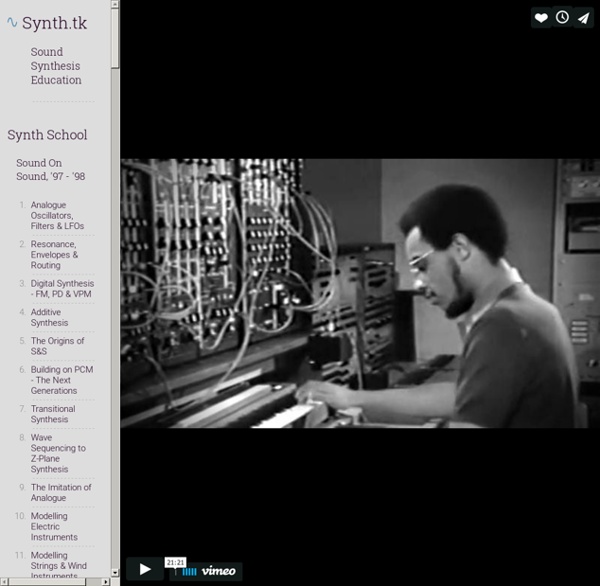



The Covert Operators Adobe Flash Tutorials – Best of « Smashing Magazine www.maxforlive.com - The Free Max for Live Device Library Remix Hotel Miami 2009 Videos | Remix Hotel Miami 2009 Domain Name www.emusician.com/remixmag/video/rh_miami/2009 Does Not Exist In The Database DotNetNuke supports multiple portals from a single database/codebase. It accomplishes this by converting the URL of the client browser Request to a valid PortalID in the Portals database table. Web Server Processing When a web server receives a Request from a client browser, it compares the file name extension on the target URL resource to its Application Extension Mappings defined in IIS.
An Ableton Live Tutorial Blog | Ableton Life URL Link in Flash CS3 (ActionScript 3.0) In ActionScript 2.0, we used to click on the button and give it onclick properties. In ActionScript 3.0 all the ActionScript is specified in the actions panel for the frame not for the button itself. We need to click the frame on the timeline and open the actions panel. We should NOT click the button instance and give the actions. Creating a URL Link in Flash CS3 (ActionScript 3.0) Click on the keyframe in the ‘logo’ layer. Below is the explanation of the customizable portions of the code to create a URL link in Flash CS3: Test the movie, you will see that the website opens when the logo is clicked. Go to Step 6 >>
inside synthesis 7 breakbeat production problems solved - Tutorials | musicradar. The practice of lifting drum beats from other people's records could've been seen as something of a necessity back in the early days of the digital home studio. After all, as a DIY recording artist in the '70s or '80s, the only other ways you were going to get professional-quality drums on your recordings were if you hired a studio and a session drummer for a few days, or you used a drum machine. However, despite a proliferation of cheap and affordable drum plug-ins, sampling existing breaks is still popular today. Getting these to 'work' in the context of a track isn't always easy though – we're going to address some of the most common concerns. 1. A late (or 'lazy') snare will always give your beats a laidback, dubby feel, whereas a snare cut right on the attack will push a beat forward and add a sense of urgency. 2. A high-pass filtered breakbeat or percussion loop with a lot of top end can add just the movement you need. 3. 4. 5. 6. 7. Now read 24 unmissable breakbeat tips
L i v e l a b . d k - Products - LiveSlice This beat slicer can do much more than just slice your beats and export the results. You can load up to 64 wave files at a time, slice them up and combine the slices in the multitrack arranger. Each slice is coloured based on the content so you can easily tell them apart - this makes manual rearranging a lot faster, and more inspirational, since you are working with direct representations of the audio and not just abstract midi notes. If you find arranging beats in a piano roll / drum map a bit awkward at times, LiveSlice will definately change the way you make music. With support for wav, aif, REX, mp3 and ACIDized wav files, as well as fast drag'n'drop import of multiple files, you can easily access your entire collection of loops. With up to 256 slices on each loop liveslice is as much a granular synthesizer as a beat slicer. The real fun begins when you start using the graphical parameter sequencer. From v.1.3 LiveSlice has been able to record incoming audio. Features Demo 1.5(current)
gotoandlearn.com - Free video tutorials by Lee Brimelow on the F Steve's Tutes - animation and video tutorials W3Schools Online Web Tutorials Flash Tutorials